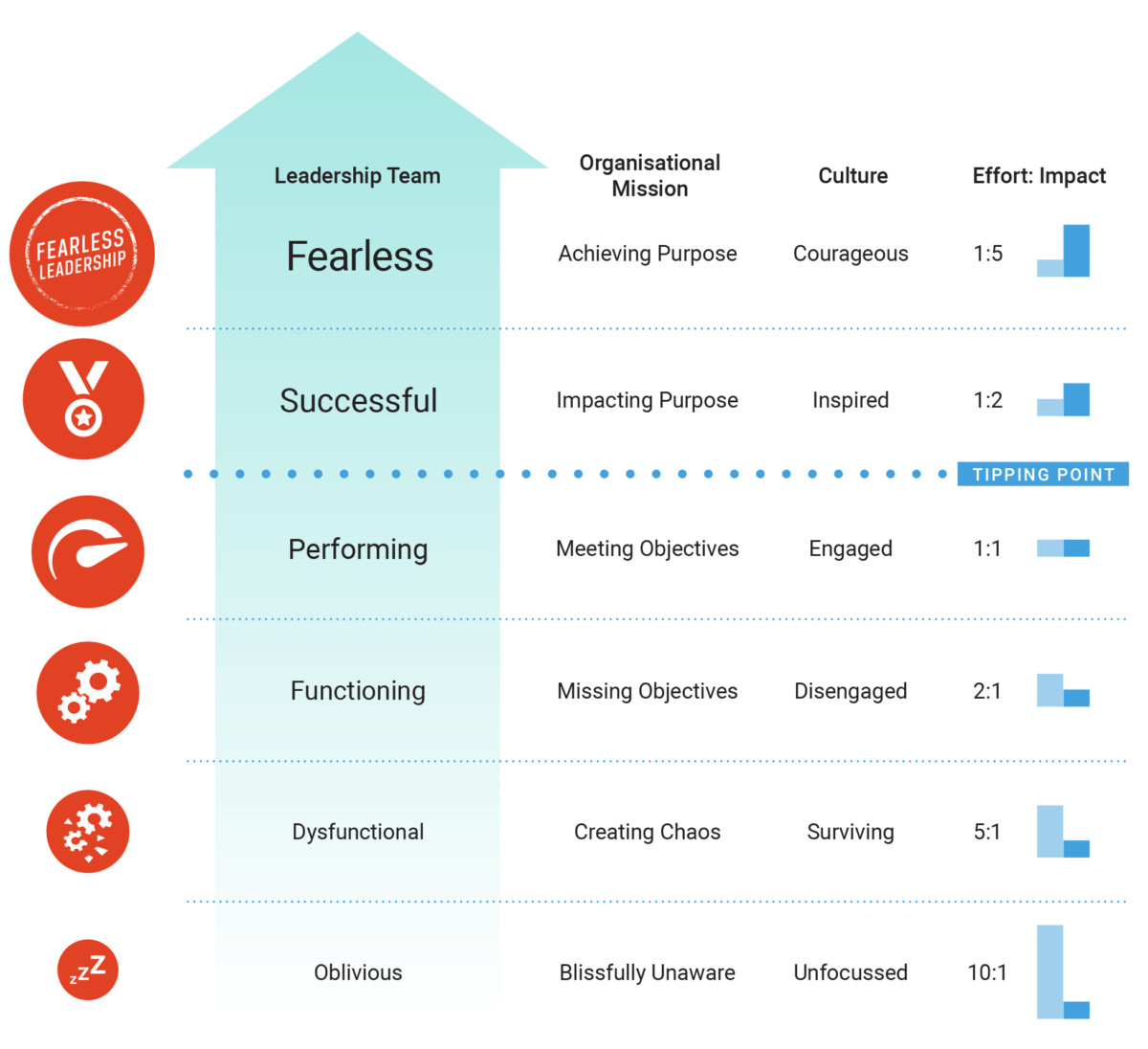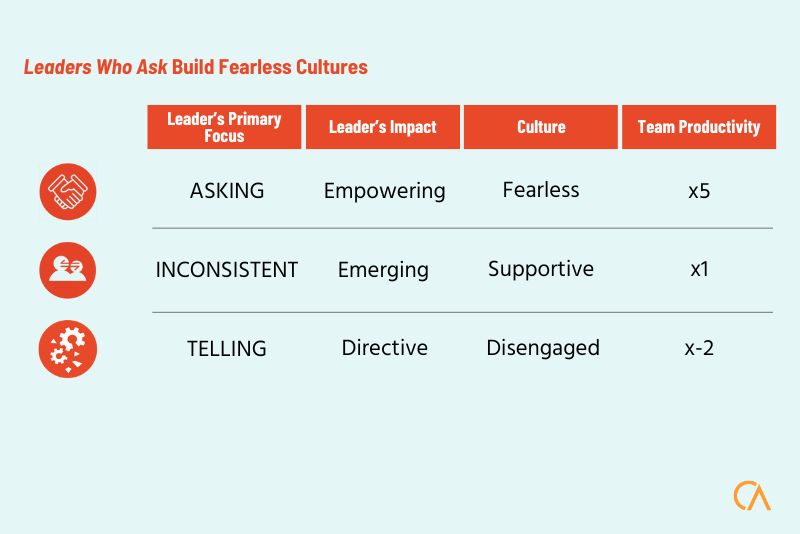Why do some leadership teams create great dynamics enabling them to lead high performing organisations, while others appear dysfunctional?

Oblivious leadership teams are blissfully unaware of their personal and team alignment with organisational purpose. They lead an unfocused organisation. While the organisation may have a level of success, this success is unsustainable.
Dysfunctional leadership teams have low morale, poor communication, little or no trust, and low clarity around organisational purpose. Organisational and team objectives are not a priority. Diversity in style leads to judgment and the occasional explosive conflict, and it is hard work getting anything done.
Functioning leadership teams have some idea of their purpose, and yet despite their effort, objectives are missed. Diversity is tolerated but not leveraged. Conflict may be avoided by suppressing disagreement, resulting in either groupthink or decisions made in an executive meeting and then unsupported when everyone leaves the room.
Performing leadership teams understand team purpose, and goals are clear and shared. Objectives are being met, although with a focus that’s predominantly internal, these objectives may not be the ones that serve the organisation long term. Conflict is surfaced—and may even be messy—and the team learns from this.
Within every team journey there is a tipping point, where the impact of the leadership team is magnified with no more effort—think domino effect.
Successful leadership teams fulfil their potential. There is heightened trust, clear and agreed goals, and shared understanding. Self-awareness and team-awareness is high, with diversity valued and leveraged. Rigorous debate leads to impactful decision making. There is a strong alignment between individual, team and organisational purpose. Regularly scanning the external horizons influences the constant refinement of that purpose. Making progress towards that purpose generates energy.
To be successful is the aspiration of most teams, and yet I know there is another level of team development above successful—Fearless.
Fearless Leadership teams achieve amazing results with what appears to be minimal effort. Organisational priorities are clear; they are informed by a strong understanding of the external environment and focus that drives the whole organisation forward. Productive conflict is the team’s source of creativity, leveraging thinking diversity and accessing the collective wisdom of the group. Power structures are dynamic and based on what is needed in the situation. Activity generates energy, so people leave on Friday night just as energised as they were on Monday morning.
When I work with leadership teams, I am often surprised by their honesty in assessing the current level of their team, leading to valuable discussion.
Where is your team on the Fearless Leadership Ladder? What causes you to think that? What could you do to help the whole team move up the ladder?
Go Fearlessly.
PS If you want to know more about building a Fearless Leadership Team, download my latest White Paper ‘Fearless Leadership: Creating conditions for organisational success through the executive leadership team, aligned and fearless’
STAY IN THE LOOP





